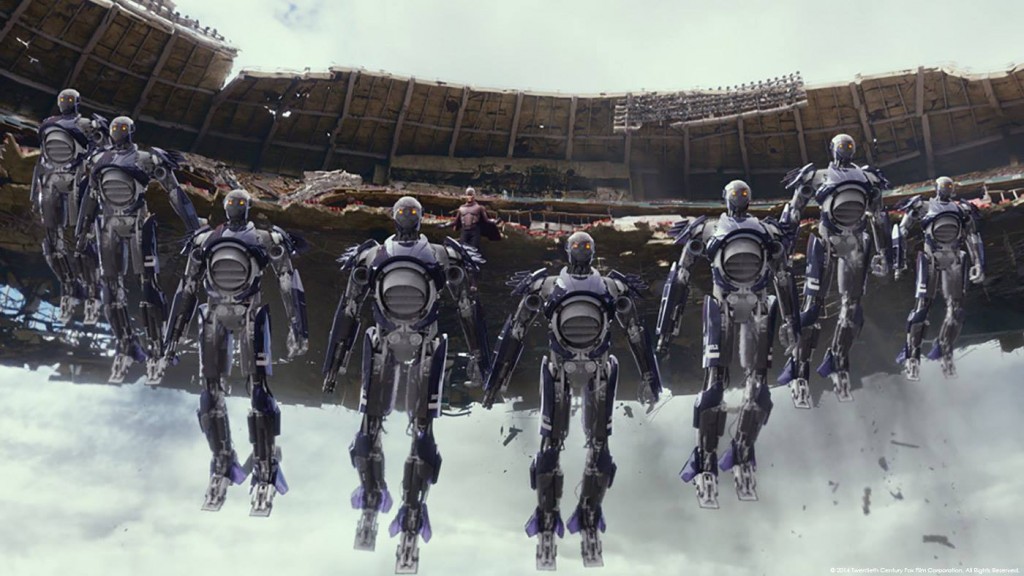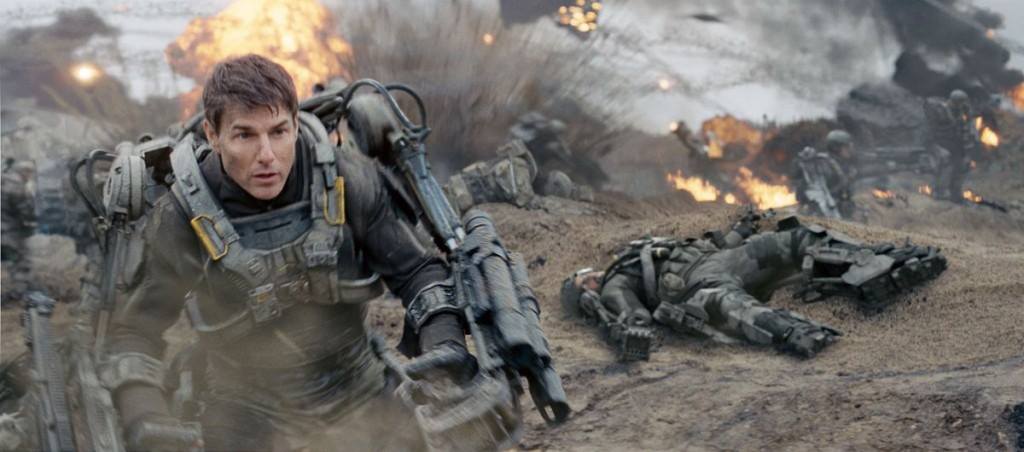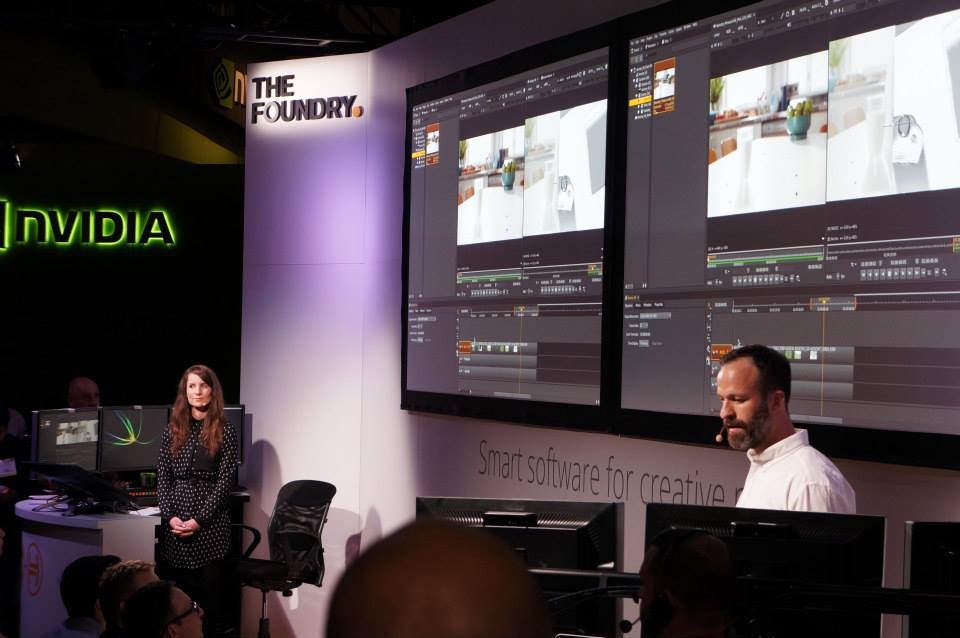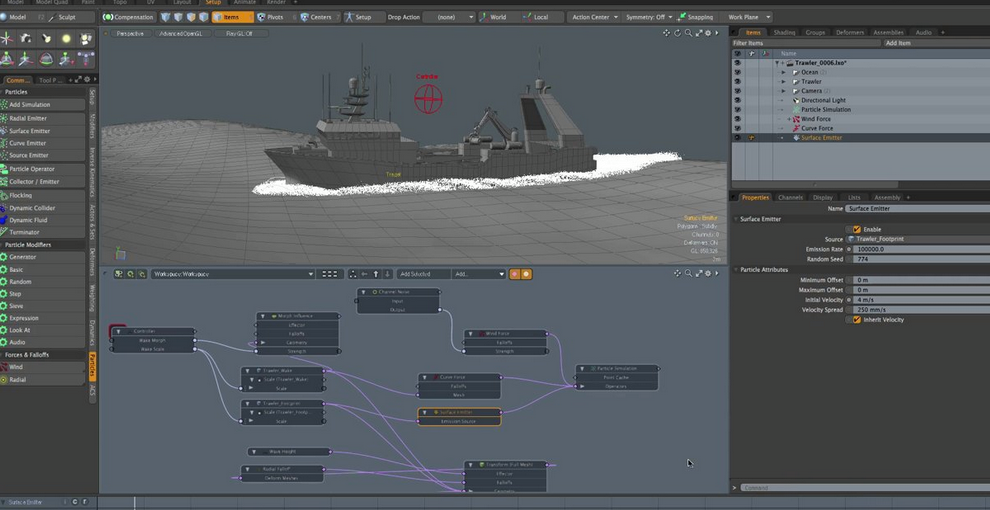 Having spent many years in production starting from working on shots and expanding his roles into leadership positions. Jordan Thistlewood has found real satisfaction in focusing on working with a group of people to get the best from each one as the head of creative specialists at The Foundry.
Having spent many years in production starting from working on shots and expanding his roles into leadership positions. Jordan Thistlewood has found real satisfaction in focusing on working with a group of people to get the best from each one as the head of creative specialists at The Foundry.
Starting with lighting, rendering and compositing his focus has grown to pipelines due to the snowball effect of decisions made at the start of a project that affect the groups that handle the end. This meant a focus on the interactions between steps, channeling peoples’ understanding of the impact of their choices on others and building tools with teams to maximize efforts.
In his role at The Foundry, he along with his creative specialist team provide feedback to the development teams from internal testing and interactions with the clients. A lot of time is spent on traveling to meet with clients and the users of The Foundry’s software.
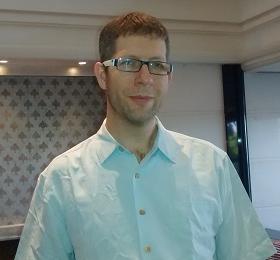 AnimationXpress.com’s Sidharth Iyer caught up with Thistlewood over a hot cuppa to discuss his journey, his passion for lighting, his work at The Foundry and finally what’s in store for the Animation and VFX industry in the coming years.
AnimationXpress.com’s Sidharth Iyer caught up with Thistlewood over a hot cuppa to discuss his journey, his passion for lighting, his work at The Foundry and finally what’s in store for the Animation and VFX industry in the coming years.
Excerpts:-
How did animation and VFX happen to you? Were you inspired by someone or any particular instance?
Like every child I grew up watching cartoons and then right about the time ‘Toy Story’ came out I was finishing my university degree and I had started out doing theatre. I was always fascinated with computers and tried to blend it into my theatre work; when I was drawn towards lighting after watching Pixar’s Toy Story.
Then there was also a TV series running in North America called ‘Movie Magic’ and I used to make it a point to watch it as it revealed some of the secrets of behind the scenes and special effects used in movies then.
When I got the opportunity to go to Toronto and to pursue a career in animation, I was confident that this is the right field for me to get into. Also during that time the Walt Disney feature film ‘The Wild’ was being made and I got the opportunity to work on that project. So my journey is full of exciting twists and turns and I never planned on doing much of the things that happened, I just let things take the natural course but never became complacent with my work.
Then I joined Foundry and got the chance to scale everything on a global level. Help out studios to understand their needs and the hurdles which they face, and come up with the right solutions to negate them and facilitate them in functioning smoothly.
Having spent close to 16 years in the animation and VFX industry, you must have seen it evolve closely, what have been the major developments?
Changes and evolutions have taken place based on which animation pipeline you look at; but what has been consistent is the amount of work that is required to recreate reality has changed constantly.
When I first started, I used PowerAnimator and while lighting you had to wait for each frame to finish before you could make any other changes. One had to think on your feet and had to recreate a lot of things to ensure that the product was of a global standard. There was a lot one had to do with the lighting, to ensure that not a single frame looked amiss, if even one frame goes out of place then the viewer wouldn’t really notice it, but as an artist that is what is the differentiator between being a craftsman or just technically sound.
I think the art of animation has been consistent all the way through, but I believe there are a few elements like modeling and things like having nurbs patches to polygons to subdivisions which have really evolved in today’s animation.
I can easily say that everything has now come closer to the true art form that inspired a familiarity in terms of the process.
After the Carlyle Group acquired majority stake in the Foundry with the idea to expand internationally and also to diversify your products, has that actually happened?
We at Foundry have always had a wide portfolio of services available globally, right from pre-production to post-production services. Talking about diversity, we are really proud of ‘Modo’ which caters to the design industries that are using it efficiently to finish projects on time. So we cater to a wide array of industries where the design can influence the visual effects and media production can help design, so there are large areas that overlap and larger areas that are unique.
How has the industry responded to the various softwares that are provided by Foundry?
The response has been phenomenal to all our products, The Foundry had its origins in plug-in development, and its first product was the Tinder (and later Tinderbox) plug-ins. We continue to sell the Furnace motion-estimation based plug-ins, which won an Academy Scientific and Technical Award in 2006. Other plug-ins includes Ocula, a set of tools for stereoscopic post-processing; Keylight, a keyer; RollingShutter, which reduces CMOS artifact distortion; CameraTracker; and Kronos.
The Foundry is also continuing the development of Nuke, a node-based compositor, and we will soon be launching Nuke Studio later this year. Version 8.0 was released in December 2013. Mari, a texture painting application was released in July 2010. This had been originally developed in-house at Weta Digital for use on Avatar. Katana is a tool for look development and lighting, originally from Sony Pictures Imageworks, and was released in 2011.Hiero, a brand new shot management, conform and review tool was released in March 2012. The software was designed in-house from the ground up by us.
Each of these have their niche areas, so in general there is a trust in The Foundry and we work on the idea that we are solving problems for our clients, not just rubbing our hands off once we have got the client on board.
The Foundry is known to work along pipelines and really go out of its way when working with clients, how has your experience been thus far?
The experience has been fabulous, and looking at the kind of diversity in the work we do there is never a dull moment in a day’s work. And the problems that are faced by our clients are more or less similar across the globe; it’s not that if someone here in India is facing some problem during post-production the same won’t be faced by someone in Tokyo or South America. We are all one big industry and it’s been a privilege to get that opportunity and really work with such focused minds.
Just to cite an example, when we launched the update with Nuke 7, it was a big development for the roto tools and we are talking about getting work done in double the speed and keeping file sizes minimalistic, yet the developer always strives harder to go onto improve the software and never rests on his laurels. That’s what I love about the folks at The Foundry, just never give up… there is a hunger and passion to keep improving and doing outstanding work.
How important is lighting in a film? Is it just a technical tool or does it really help is the aesthetics of the final product?
Actually, it’s a very important aspect of storytelling. Just imagine all the movies where you have seen the road with lights reflecting off the ground, which can only be possible if it had rained. Lighting in the movie industry is a language in itself. In the realm of VFX, lighting is what makes or breaks whether the integration works; you could have an elaborate stage extension but if it’s lit from the left and the plates are lit from the right you know the result. So it’s a science and needs a lot of effort to get things right. The same goes for 2D animation as well, where when you are the lighting artist you need to think like a DOP and set things up in a very visually appealing manner, so that the viewer falls in love with the shot.
What is your view on the Indian animation and VFX industry? Do you really feel it has managed to live up to its potential? If not, what needs to be done?
I think the animation industry here is growing leaps and bounds, though it’s still early days; what I have seen is a range of studios that are doing just brute force work to sophisticated well thought out pipelines; that maximize people’s potential and work towards running of a smart business operation.
According to me, there are two things required for a successful studio/institution. One being a company that believes in driving business and making money and number two being having a great mix of creativity and art in whatever is done or taught; only when these two things complement each other, will the venture be successful.
I believe studios like Firefly Studio and Prana Studios are some of the best practices here in India and there are other studios that are doing their best to get the state of the art infrastructure in place.
The ideal practices are to try and evaluate the roadblocks which the team is facing and whenever a new project is taken on, the estimates need to be taken into account and one must not undervalue the efforts that go into the project. The companies that will do well are those that empower their employees and never let them feel undervalued for the work they have done.
What is the purpose of your India visit? Which studios did you visit? Any deals struck?
Well we just signed a deal with BOT VFX and they have made a massive deployment of Nuke in their facility, so part of the trip was to visit people like them that are essentially our partners and have taken large scale deployment of our software, so we come down here to support them.
So it’s basically, looking at what our client do; listening to their challenges and finally helping them out in solving those challenges.
What is the next big thing that is going to hit the VFX and Animation industry in the coming decade? (Hopefully not recession)
We have seen most things recovering from a global perspective, so I would like to positively say that it has a lot of potential and with the media distribution models changing, things like Netflix in North America and if services like that spreads in the global market then there are exciting times ahead as we will be looking at completely new avenues and the industry itself faced a problem because we had so many people kept competing for the share of the same pie, but now with more avenues coming up that require the same number of tools and similar creativity then the market will be growing quite significantly still.

